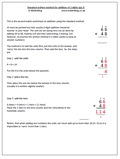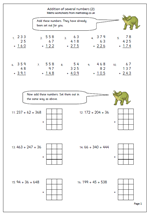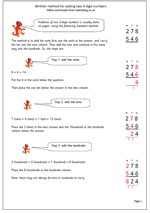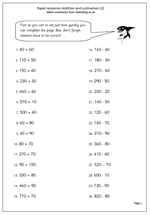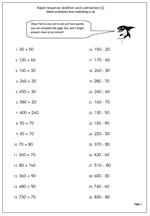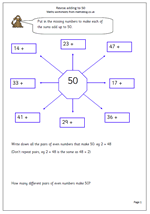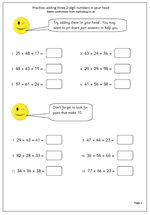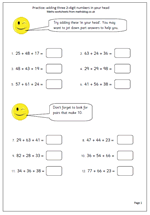One of the most popular parts of the site for parents is our Free Maths Worksheets: Four Rules pages on written addition.
Many parents think that the methods they were taught at school (and for many this would be in the mid 1990s) are different from today. This is only partly true. Since the onset of the Numeracy Strategy and later the Primary Framework for Maths the emphasis has been on preparing children properly so that they understand the written methods they use. So there is a lot of preparation work and methods often called, ‘Moving towards the standard written method’ that may not be familiar to parents, but the end result is pretty much the same. It is these intermediate stages which some parents find puzzling.
The standard written method is to lay out the sum vertically, with the numbers to be added under each other. The units are added first, then the tens and so on. We have several worksheets which explain this method in full.
